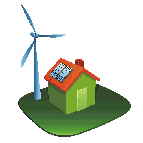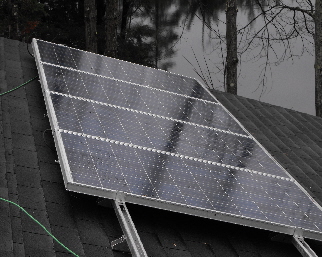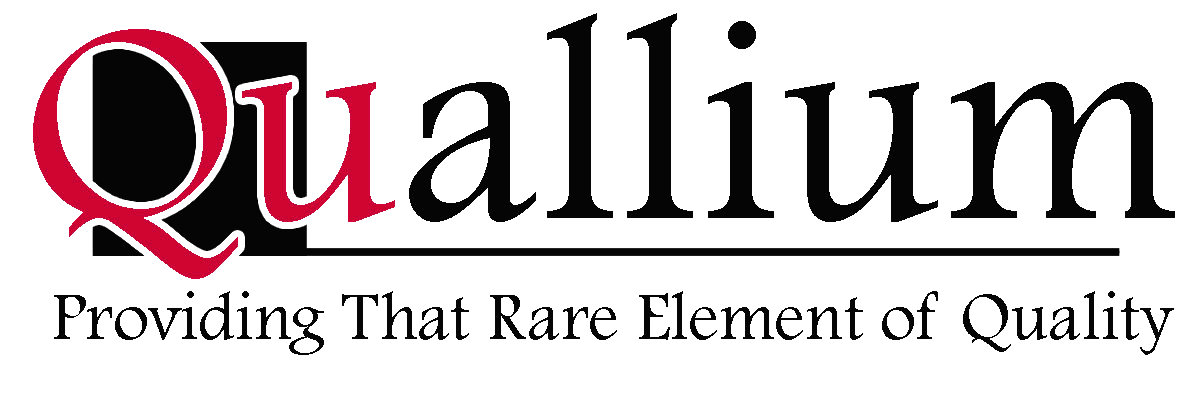|
Step 1: Determine your energy consumption
This is required to determine your alternative energy system’s size.
If you are already connected to the grid then this step is really easy since your monthly bill will indicate your kilowatt hours of consumption for the month. If this is a new system then you need to add up all the individual energy consumption of each electrical device to be used. Hydro Ottawa has an energy calculator that makes this fairly easy.
Step 2: Determine your budget constraints
It is very important to know how much money you have available for alternative energy. This amount must take into account the total cost of energy and not just the initial outlay. The cost of installing alternative energy are very close to the costs of installing conventional energy devices. However, most people considering alternative energy are probably already using conventional energy and therefore must pay for the removal of this first system, and will sometimes be required to make modifications in order to meet Electrical Code requirements, as well as the costs to install the alternative system.
In this case, the total cost must include the monthly savings of not using the conventional energy system. These monthly savings can be expected to rise as time goes on. So an alternative system that may initially appear to have a break even (initial outlay costs equal monthly savings) occurring in many years could in fact have a break even occurring much earlier than expected.
Financing is also critical to consider. It is not necessary to have all of the initial funds up front. By borrowing the funds you can use the monthly savings to offset the monthly loan payments. While interest charges will increase the total cost of the system this is an excellent method to finance a new system.
Step 3: Determine what regulations pertain to your area (i.e. zoning by-laws)
This is fairly easy. The Ontario Building Code Act requires homeowners to obtain a building permit to construction to ensure that Building Code standards have been met. It is best to call or visit your municipality office to determine if you need a building permit. They can also inform you about other approvals that may be required.
Step 4: Determine your installation constraints (wind patterns, location of sun, availability of water source)
This is a quick check to ensure that alternative energy is feasible to use in your location. If you do not have any direct sunlight, wind or water source then alternative energy will not be a good solution. This is extremely rare. For solar energy you must consider how to position your panels to make maximum use of direct sunlight. This means avoiding shaded areas and ensuring that you can get the right tilt angle on the panels.
The easiest place to install panels is on roof tops. However, if this is not possible then pole mounting should be considered. An advantage of pole mounting is that the panels will have better air circulation around them which will improve their performance.
Wind power requires a consistent wind of at least 4 metres per second (m/s). It may be necessary to mount your wind turbines 30 metres or more above the ground to get this speed and consistency. Mounting wind turbines may require a concrete base and guide lines to steady the mount. It is essential that the mount be capable of withstanding strong gusts of wind. Do not try to save money with a cheap installation.
Water power requires a water source with a flow rate of at least 45 litres per minute and a vertical drop of 10 feet. Installation may require some form of damming depending on the system to be used.
Step 5: Determine what type of alternative energy (i.e. wind, solar electric, solar thermal, or micro-hydro)
Based on the information determined in the previous three sections, you can now determine the type of alternative energy system that is needed. This will depend on the resource that you can exploit, the amount and consistency of power required, and what are your financial limitations. Wind power is usually better in the winter, solar power is better in the summer, and water power is fairly consistent all year round.
Step 6: Determine the configuration of your system
The configuration of your system refers to your setup. Are you on or off grid? Do you need back-up power? Is alternative energy supplying all of your energy needs or just a portion? Do you wish to have net metering? These are the types of questions to consider.
Step 7: Determine who will install your system
Quallium uses professionals in the construction business to install our products. They have extensive experience and are committed to providing quality workmanship.
|





